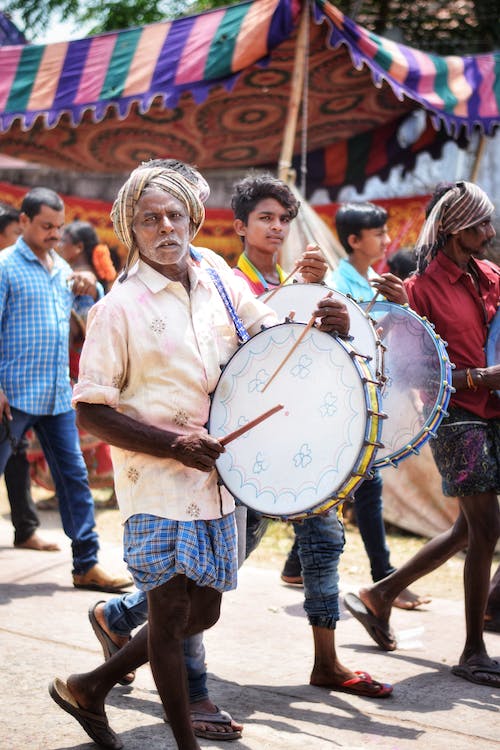The Parai, also known as Thappu, is considered one of India’s oldest drums, specifically in the South Indian state of Tamil Nadu and some parts of Sri Lanka. The Parai is also known as one of the symbols of the Tamil culture. During the olden days, the Parai was used as a communication tool to send messages as well as alert the tribe for any danger. This instrument is made of a wooden frame with a closed cow skin membrane. In this article, we are going to learn more about the history and the different techniques to play the Parai.
History
In Tamil Nadu, the word parai means to tell or to speak, which is why this instrument is often used to announce important messages and orders of the great Tamil Kings. During the olden days, the parai was also used for requesting the civilians to leave the battlefield, warn the people about the upcoming war, announce defeat or victory, warn the people about the presence of wild animals, and gather the farmers for some farming activities. Aside from conveying a message, the parai was also used in the worship of nature, weddings, as well as other celebrations. Since its invention, the parai has been one of the most essential instruments in Tamil Nadu and the whole of India.
What does a Parai Look Like?
A parai is a frame drum that is about 35 cm in diameter. It has a shallow ring of wood, and it is covered on one side using a stretched cowhide that is glued to the wooden ring. The parai’s ring is often made with neem wood, but other wood types can also be used. The parai’s shell has three separate pieces of wood made into a shape of an arc that is then held together by three metal plates. In order to play the parai, one must need two sticks, wherein one is a thin, long, and flat bamboo stick called the SunduKuchi and a short but thick stick that can be made from different types of wood, and this is referred to as Adi Kutchi.
How to Play the Parai
In order to play the Parai, you must need to sling one strap over one of your shoulders. After that, hold the instrument vertically by pushing it towards your body. In this way, the instrument can be played even if your standing, walking, and dancing.
As we mentioned, the parai is played with two sticks, and it has three fundamental strokes wherein all of the rhythmic patterns came from. These three essential strokes are striking the middle of the drum using the shorter stick held by your dominant hand, striking the drum using both of the sticks, and slapping the center of the drum using the long sting held by your weak or off-hand.
The short stick is usually held loosely between your thumb and the middle, index, and ring finger of your dominant hand. You should hold it vertically upright and position it on the lower rim of the parai. At the same time, your off-hand holds the long stick resting on the upper side of the parai.
Before every performance starts, the parai players hold the instrument near a small bonfire to heat it. This process allows the instrument to absorb the moisture in the drum’s heads as well as tighten it. After being held close to the heat, the parai will produce a loud and high-pitched cracking sound every time it is struck.

